.jpg)
This is the second year in a row the Haval H9 has made the 4X4OTY shortlist, after first arriving in Australia in early 2016. Now it’s back courtesy of what is effectively a new powertrain.
Think of the Haval H9 as a Chinese ‘take’ on Toyota’s Prado. Excellent vehicle to copy, of course, and you can’t blame Haval for thinking, “let’s build something like this”. Haval even employed a Toyota chief engineer to help them.
Haval is an offshoot brand from Chinese ute-maker Great Wall, and among the various Havals sold in Australia the H9 is the only serious 4x4, the others being lighter-duty SUVs.
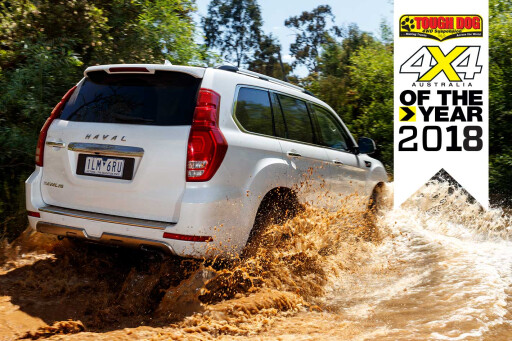 While the H9 mimics the Prado in its body dimensions, seating layout, body-on-chassis construction, suspension layout, wheel and tyre specification, and by having dual-range full-time 4x4, it’s not offered with a diesel engine, which would seem like a deal-breaker on the Australian market.
While the H9 mimics the Prado in its body dimensions, seating layout, body-on-chassis construction, suspension layout, wheel and tyre specification, and by having dual-range full-time 4x4, it’s not offered with a diesel engine, which would seem like a deal-breaker on the Australian market.
Still, it’s not all bad news, as its petrol engine – a 2.0-litre four-cylinder – is a very up-to-the-minute design with direct injection, twin-scroll turbocharging and variable valve timing on both inlet and exhaust sides.
In another touch of sophistication the Haval has an eight-speed automatic gearbox from German transmission specialist ZF, which is new and replaces the ZF six-speed used before.
TOURING
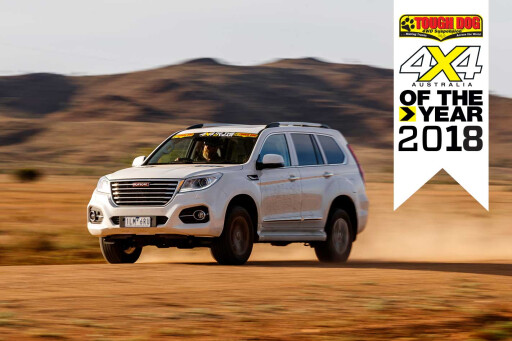 The H9’s engine upgrade adds 20kW (now 180kW) and more torque on tap at lower engine speeds. It now claims 350Nm from 1800rpm, where previously its max 324Nm didn’t come on stream until 2000rpm.
The H9’s engine upgrade adds 20kW (now 180kW) and more torque on tap at lower engine speeds. It now claims 350Nm from 1800rpm, where previously its max 324Nm didn’t come on stream until 2000rpm.
If you think 350Nm from 1800rpm sounds handy and almost diesel-like, you’d be right. Better still, that 350Nm stays on tap all the way to 4500rpm, which gives this engine top-end zip that’s very un-diesel like.
On the open road the ‘little’ turbo-petrol engine has no trouble hauling the weight or the bulk of the H9 and is generally unfussed, even if it shuffles up and down the gears a bit when pressed. Still, with the excellent refinement of the ZF eight-speed, this isn’t a problem and likewise the engine is smooth and quiet even when asked to rev, which it does willingly.
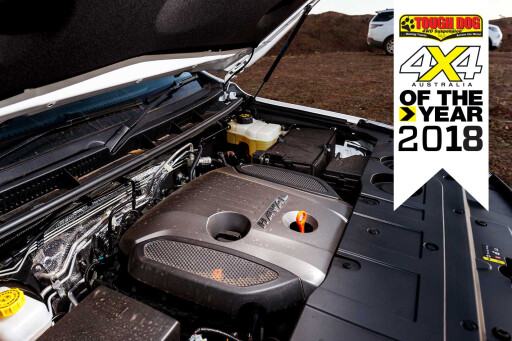 Smooth and quiet are also key words in terms of the way the car works on the open road. The ride is plush and both wind and road noise are well suppressed, not surprisingly both Prado traits.
Smooth and quiet are also key words in terms of the way the car works on the open road. The ride is plush and both wind and road noise are well suppressed, not surprisingly both Prado traits.
In some ways, however, the ride is too soft at times and, combined with somewhat vague steering, the H9 can feel a bit loose and floaty, especially at higher speeds on bumpy and undulating roads.
TRAIL DRIVING
The H9’s soft and supple suspension is the reason behind impressive performance on rocky and rough trails. The long travel suspension and well-calibrated traction control also sees the H9 through gnarly bits without fuss, even if a little more ground clearance wouldn’t go astray. Good vision from the driver’s seat, too.
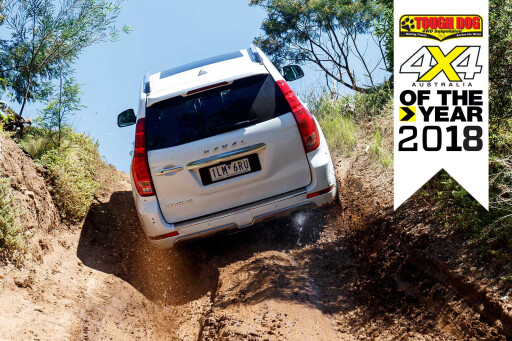 The H9 has a full-time 4x4 system courtesy of a BorgWarner dual-range transfer case with an active self-locking and self-proportioning centre differential, much like that employed with the Ford Everest. There are also terrain settings for Sand, Mud and Snow, but these are only available in low-range, which is an oversight as these setting should be available in both high and low range.
The H9 has a full-time 4x4 system courtesy of a BorgWarner dual-range transfer case with an active self-locking and self-proportioning centre differential, much like that employed with the Ford Everest. There are also terrain settings for Sand, Mud and Snow, but these are only available in low-range, which is an oversight as these setting should be available in both high and low range.
The H9 draws its intake air from the inner guard for safer water crossings (a claimed 700mm wading depth) and comes with solid front and rear recovery hooks.
SET-PIECE HILL CLIMB
 Our set-piece hill climb is designed to stop, or at least test to the max, any showroom-stock 4x4, but the Haval managed the climb without raising a sweat. In fact, the H9 was as good as any vehicle here. While it did its best work with the rear locker engaged, it also managed the climb without the locker. All of which can be put down to its long wheel travel, especially that of the rear live axle.
Our set-piece hill climb is designed to stop, or at least test to the max, any showroom-stock 4x4, but the Haval managed the climb without raising a sweat. In fact, the H9 was as good as any vehicle here. While it did its best work with the rear locker engaged, it also managed the climb without the locker. All of which can be put down to its long wheel travel, especially that of the rear live axle.
CABIN AND EQUIPMENT
The H9 has a big and comfortable cabin with a spacious second-row seat and a third-row that’s okay for up to medium-sized children. Again, very Prado like. Decent luggage space, too.
 This top-spec H9 Ultra has a lavish list of equipment commensurate with an $80K 4x4, not a $45K 4x4. The kit includes leather; electric/heated/air-conditioned front seats complete with massage function; a premium audio system; electric folding third-row seats; advanced safety kit; and a panoramic sunroof. Not so good is the somewhat fussy and unfriendly layout of the dash and switchgear, as well as some aspects of the fit and finish.
This top-spec H9 Ultra has a lavish list of equipment commensurate with an $80K 4x4, not a $45K 4x4. The kit includes leather; electric/heated/air-conditioned front seats complete with massage function; a premium audio system; electric folding third-row seats; advanced safety kit; and a panoramic sunroof. Not so good is the somewhat fussy and unfriendly layout of the dash and switchgear, as well as some aspects of the fit and finish.
PRACTICALITIES
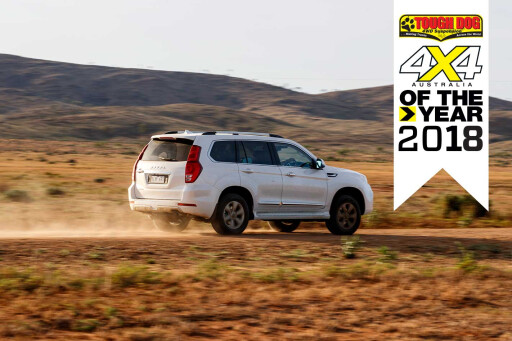 The downside of the Haval’s otherwise impressive engine is relatively high fuel consumption. Overall it averaged 14.0L/100km for this test but got down to 12 on the highway. All of which means the 80-litre fuel capacity translates to modest touring range. The H9’s engine, as is the norm for turbo-petrols, is also specified for premium (95RON) petrol, both a running-cost factor and a potential availability issue in some areas. Petrol power doesn’t bode well for towing economy, and max tow capacity is a modest 2500kg.
The downside of the Haval’s otherwise impressive engine is relatively high fuel consumption. Overall it averaged 14.0L/100km for this test but got down to 12 on the highway. All of which means the 80-litre fuel capacity translates to modest touring range. The H9’s engine, as is the norm for turbo-petrols, is also specified for premium (95RON) petrol, both a running-cost factor and a potential availability issue in some areas. Petrol power doesn’t bode well for towing economy, and max tow capacity is a modest 2500kg.
Better news is that the Haval runs Prado/Hilux wheel and tyres sizes, which is what you want for tyre replacement in an emergency in the middle of nowhere. The H9’s limited sales don’t bode well for aftermarket support.
SUMMARY
 There’s no doubt the H9 is held back by the lack of a diesel donk, but it still offers a truck-load of value in what is a capable, comfortable and surprisingly practical 4x4. And what you save on the initial purchase price over something like a Prado diesel is going to pay for an awful lot of petrol.
There’s no doubt the H9 is held back by the lack of a diesel donk, but it still offers a truck-load of value in what is a capable, comfortable and surprisingly practical 4x4. And what you save on the initial purchase price over something like a Prado diesel is going to pay for an awful lot of petrol.
2018 HAVAL H9 ULTRA SPECS
Engine: 2.0-litre 4-cyl turbo-petrol
Max power: 180kW at 5500rpm
Max torque: 350Nm at 1800-4500rpm
Gearbox: Eight-speed automatic
4X4 system: Dual-range full-time
Kerb weight: 2230kg
GVM: 2850kg
Payload: 620kg
Towing capacity: 2500kg
GCM: 5350kg
Fuel tank capacity: 80 litres
ADR fuel claim: 10.9L/100km
Test fuel use: 14.0L/100km
Touring range*: 521km
Price: $44,990 (+ORC)
*based on test average, tank capacity claim and a 50km safety margin

COMMENTS